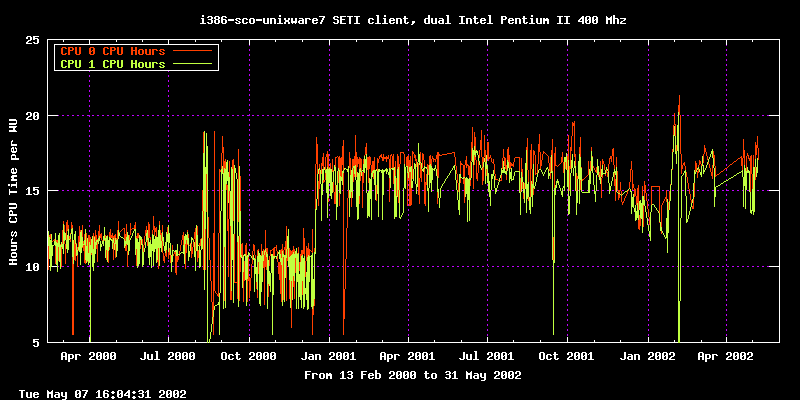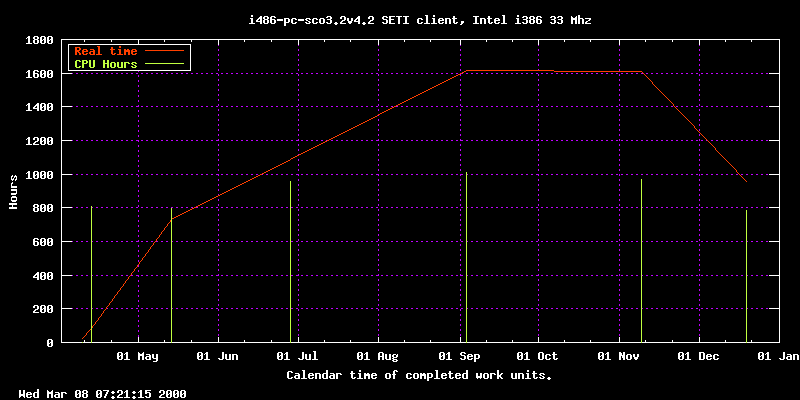
dual Intel Pentium 400 Mhz machine running UnixWARE 7,
and then OpenUNIX 8.
The client in use at the beginning was the sco-sysv5.unixware7 client.
From May 2001, with the Linux Kernel Personality of OpenUNIX 8, the client
in use is the i686-pc-linux-gnu-gnulibc2.1 client.
These two clients have the same computation speed, however there is
an unknown problem with sco-sysv5.unixware7 client when a firewall is
in use, it can not return work units. The Linux client does not have
this difficulty.
Since I am the porter for the unixware7 client, the problem is my
responsibility, however I have never been able to find a solution.

on an Intel 386 CPU running at 33 Mhz running SCO OpenServer 3.
The graph demonstrates that it took several months to compute one
work unit. The green spikes indicate the date on which a WU
was complete and their height indicate the amount of CPU time as
reported in the WU header. The red line indicates the wall clock
time consumed between completion of work units.
The long wall clock time compared to the CPU time is probably due
to the lack of available memory in the machine and thus a lot of swapping
was consuming the CPU time. The machine only had 16M bytes of memory.
 project, The Search for Extraterresterial Intelligence
project, The Search for Extraterresterial Intelligence